Undoubtedly, Egypt has been on every traveler’s bucket list — no need to talk about the “rich history” or incredibly diverse sea life.
- Cairo and Giza
- 1. Admiring the Pyramids of Giza
- 2. Wandering the Egyptian Museum
- Tip
- Western Desert and Oases
- 3. Walking the surreal landscape of the White Desert
- 4. Discovering Ancient Volcanoes at Bahariya Oasis
- 5. Floating at the Siwa Oasis
- 6. Discovering the Fayoum Oasis
- Luxor
- 7. Diving deep into Egyptian history in the Valley of the Kings
- 8. Getting iconic Instagram shots at the Temples of Karnak
- 9. Taking a Hot Air Balloon Ride Over Luxor
- 10. Wandering around the Luxor Temple
- Aswan and Abu Simbel
- 11. Visiting Abu Simbel Temples
- 12. Touring the Temple of Philae
- 13. Having High Tea at the Old Cataract Hotel
- 14. Cruising the Nile River
- 15. Experiencing a Nubian Village
- Alexandria
- 16. Discovering the Catacombs of Kom El Shoqafa
- 17. Researching the Alexandria Library
- 18. Walking around the Citadel of Qaitbay
- Sinai Peninsula
- 19. Uncovering the Mysteries of the Blue Hole in Dahab
- 20. Diving or Snorkeling in Ras Mohammed National Park
- 21. Watching the Sunrise at the Summit of Mount Sinai
- 22. Sampling Local Cuisine
- 23. Going for a camel ride
- 24. Hiking the Colored Canyon
- 25. Swim with dolphins, turtles, or dugongs in Hurghada
- Read more
Hands down, maybe the Great Barrier Reef can compete in terms of underwater ecosystems, but the Red Sea of Egypt is definitely a top diving destination because of that. In the meantime, many trip reports to Egypt account for not-always-top-notch service, scams, touts, harassment, and so on.
Let’s look closer at the top 25 Egypt bucket list experiences to help you decide whether to include a certain item in your trip itinerary or completely skip it. Or consider taking an approach different from what the ready-made tours are offering.
Cairo and Giza
1. Admiring the Pyramids of Giza

Location Details
The Pyramids of Giza are the only surviving Wonder of the Ancient World. Definitely, it’s at the top of the list and not an item to skip. If Cairo is your base for a few days, it might make sense to stay in Giza so that you can enjoy the views of the pyramids right from the hotel room.
Camel rides
As for the camel rides, the Giza Plateau is relatively small — if you aim to see the pyramids up close, you will only get to walk around 3km / 2 mi. Many people refuse to take camel or horse rides as they don’t like how these animals are being treated.
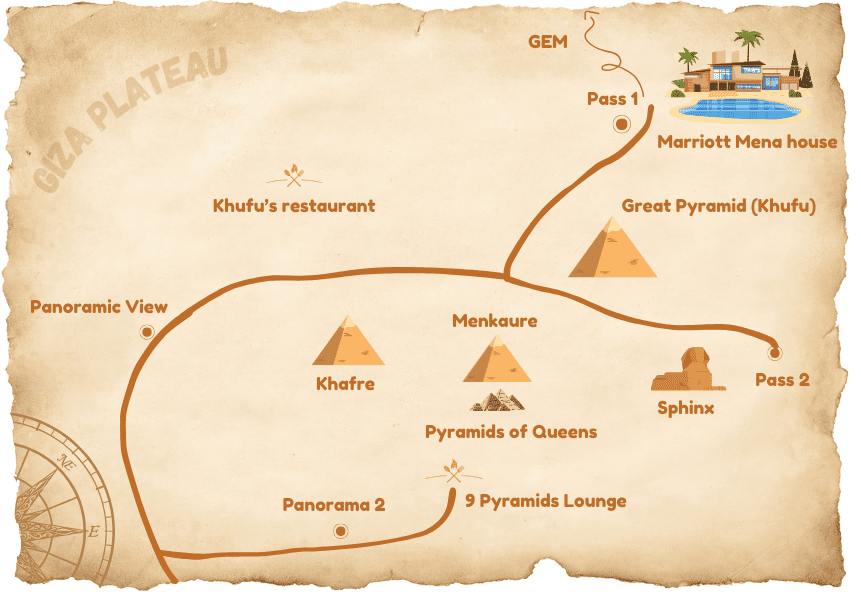
However, if you want to go to Panorama Point and further down to the 9 Pyramids Lounge, the distance will get significantly bigger, and you might consider hiring a driver. If you aim to capture the sunrise or sunset over the pyramids, you might want to consider getting a camel tour in the desert. The complex has 2 entrances: 1 near the Great Pyramid (Khufu) and another near the Sphinx.
2. Wandering the Egyptian Museum
The Egyptian Museum has secured its place in nearly all packaged tours and countless itineraries you can find online; it is listed as a must. The museum’s collection is vast, with over 120,000 items on display. Deciding on whether to go or skip depends on how deep a dive you want into Egyptian history.

Location Details
GEM (Grand Egyptian Museum) has already opened its doors. It aims to be the biggest museum in the world, with a floor area of 490,000m2 or 5,300,000ft2. Some collections were relocated from the “old” Egyptian Museum to GEM. GEM’s unbeatable advantage is that it’s situated on the Giza Plateau, only 2 km / 1,2 mi away from the pyramids.

Location Details
Setting Expectations
The Egyptian Museum opened its doors back in 1902 and hasn’t been substantially renovated since then. So, no need to expect very modern and well-lit surroundings. On top of that, there’s no air conditioning, so dressing accordingly and bringing extra water will make it more comfortable. On the bright side, this kind of ambient can give an old-world feel.
If you decide not to hire a human guide, you can do well with an audio guide. Prepping by browsing the dedicated website and listening to podcasts on the history of Egypt will make the wandering a lot more meaningful.

Once inside, prioritize your must-see artifacts. The star attraction is undoubtedly the treasures of Tutankhamun, including the famous golden mask. Head there first to beat the crowds. The Royal Mummy Room is another highlight, offering a rare glimpse at some of Egypt’s most famous pharaohs.
Tip
Room 3 on the first floor has pre-dynastic artifacts that are 5,000+ years old. Most people skip this for the gold stuff, but these simple pottery and tools show how Egyptian civilization really started.
Western Desert and Oases
3. Walking the surreal landscape of the White Desert
The only reason to skip this bucket list experience is being really short on time. The White Desert is a stunning natural wonder. Its surreal, otherworldly landscape of chalk-white rock formations, shaped by centuries of wind erosion, creates an experience like no other.

Location: Farafra Depression, Western Desert, Egypt. 5 hours drive from Cairo
Price: The admission itself is $5. Tour prices vary depending on the duration, which usually includes transportation, meals, and a guide. The prices start at $100/ €95 / £80.
This could be the case, some years ago, when White Desert was considered a hidden gem. Nowadays, it’s widely popular. Countless 4WDs are swarming the desert during the daytime. It’s not a place for solitude; expect no privacy when visiting the White Desert.
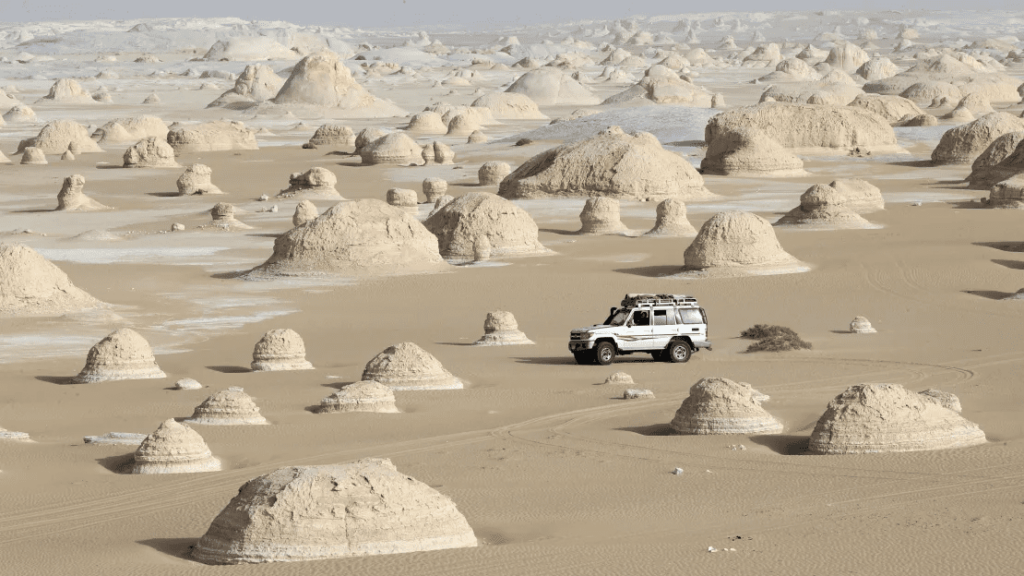
Due to the lengthy time to get there (about 5 hours of driving one way) and popularity, taking a day trip is not recommended. The best choice would be to spend at least 1 night camping.
Having committed so much to this trip, tourists want to make it busy and memorable. Here’s a list of the most popular bucket list experiences that White Desert has to offer:
- Hiking along the “Snow Mountains”
- Taking photos near the Arch
- Seeking shade near the Santa Tree
- Observing the unique limestone formations — mushrooms, chicken, rabbit
- Sandboarding
🌌 Star gazing
Speaking of camping in the desert. Not only will you get to enjoy the beauty during sunset or sunrise. But also, the vast naked landscape with no sources of artificial light gives exposure to unobstructed night sky views. Trip reports account for seeing the entire Milky Way during the overnight desert stay.
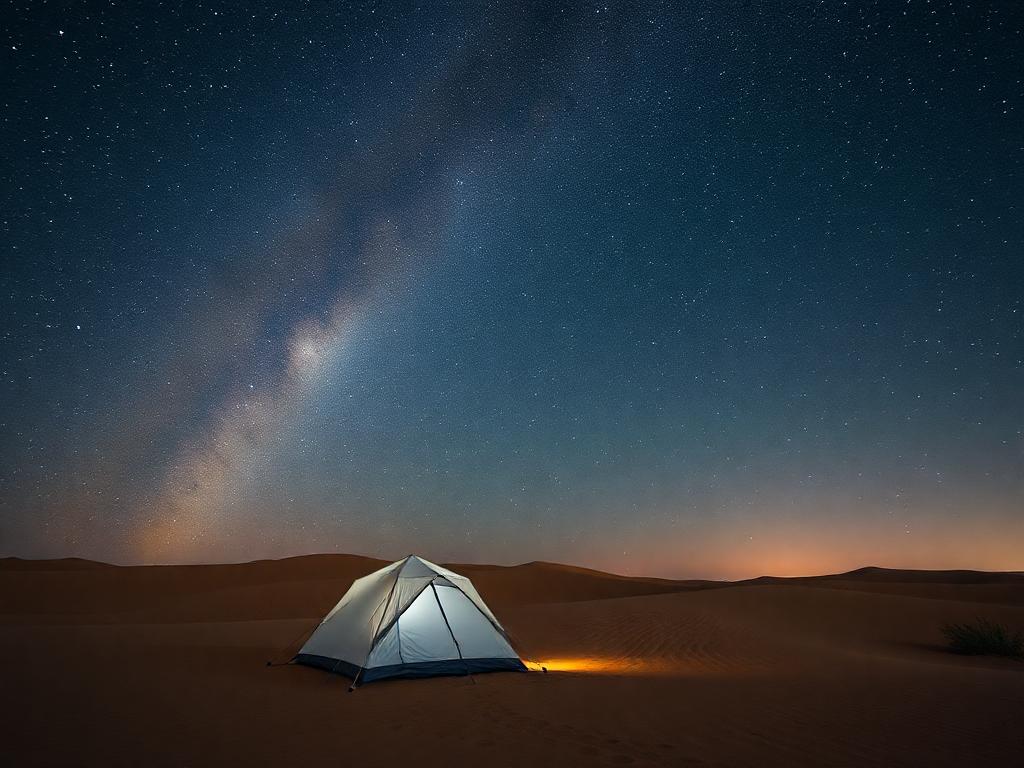
White Desert tours usually include several more attractions and experiences in their itineraries. The options may vary slightly. Here’s the list of stops you might expect or look for when selecting a tour: Crystal Mountain, Black Desert, “Old” White Desert, Valley of Agabat.
4. Discovering Ancient Volcanoes at Bahariya Oasis
Located in the Western Desert, the Bahariya Oasis is a lush haven surrounded by arid landscapes, known for its hot springs, date palms, and ancient ruins.
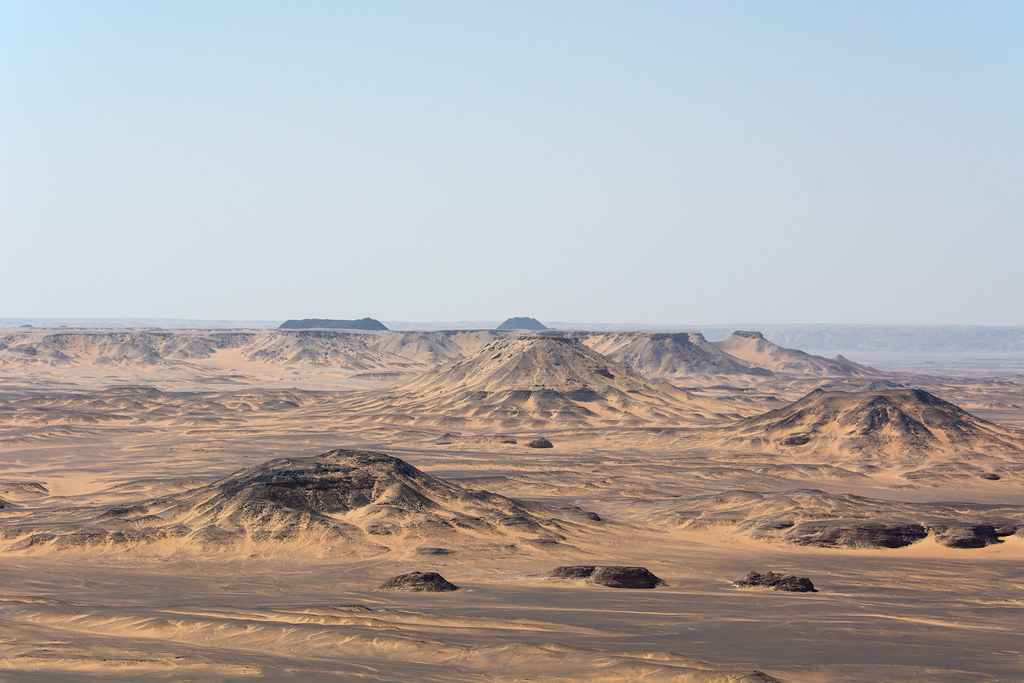
Location: Giza Governate, 200 km / 124 mi west of the Nile Valley and 370 km / 230 mi by road from Cairo
Until 50 years ago, Bahariya was isolated. It was only in 1969 that an asphalt highway was laid here. It was not brought to the capital of the oasis immediately, but only after the discovery of iron ore deposits by the Soviet Union.
There are supposedly 400 hot and cold springs around Bahariya. However, not so many of them are open to the public. The most visited public hot spring is called Bir Sigam. It’s very hot – 45Cº / 113Fº and highly mineralized. The whole experience is very “rustic”; it has no facilities, and many locals come there for hygienic purposes.
Another one is the Magic Spring. The Magic Spring (or Ain al-Serw as it’s called in Arabic) is a palm-shaded spring with 3 small pools located in the middle of the desert.
Black Desert
Bahariya is usually the first stop for the White Desert tours. Since White Desert lies between Bahariya and Farafra and is about 100km / 62 mi away from Bawiti, one of Bahariya’s major towns.
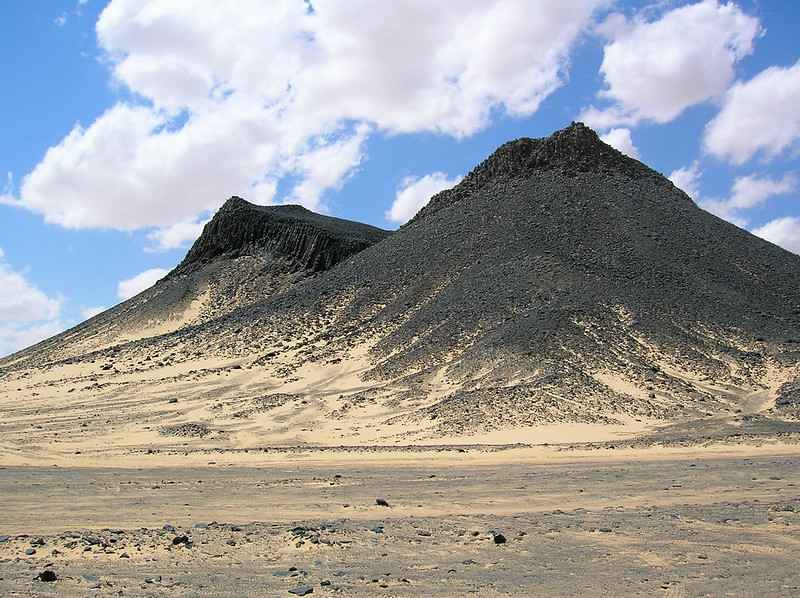
However, being a top tourist attraction, the White Desert casts a shadow on the lesser-known but no less spectacular Black Desert. Which is only 50km /30 mi away from Bawiti. The black-topped hills originated as a result of volcanic eruptions hundreds of millions of years ago.
Golden Mummies
Not far from Bahariya, the ruins of the temple of Alexander the Great were discovered. Some archaeologists believe that the commander passed through the oasis on his way back from the oracle of Amun in the oasis of Siwa.
In the 1930s, paleontologists discovered fossils in the area of the nearest mountains, leading to the identification of a megaraptorid theropod species named Bahariasaurus, which inhabited the region during the Cretaceous period around 95 million years ago.
In 1996, the excavations at the Greco-Roman necropolis, known as the Valley of the Golden Mummies, revealed approximately 34 tombs from that era. The mummies and their sarcophagi had gold masks and rich jewelry, among them was the local governor, Jed Khenso Ifuankh.
5. Floating at the Siwa Oasis

Location: Marsa Matrouh Governate, close to the Libyan border
Siwa Oasis is one of the most remote and isolated places in Egypt. Lying between the Qattara Depression and the Great Sand Sea and embraced by 2 lakes, Siwa Oasis is a beautiful sight. It is known for its lush palm groves, salt lakes, cool and hot springs, and the ancient Temple of the Oracle.
🗺️ Getting there
Despite the direct distance of 560km/350 mi from Cairo to Giza, it will not be a 5-hour drive because there’s no straight road connecting Siwa to Cairo or Alexandria. That is why, even being commonly known, Siwa is not crowded at all.
To get to Siwa, you can take a public bus, hire a driver, or get a guided tour. Even though there are plenty of car rentals, driving there yourself is not recommended. Numerous security checkpoints will take up your time, and most likely will not let you pass without a bribe. That’s why having a local driver will save you much time and trouble.
🏛️ Culture and Heritage
As mentioned before, Siwa is close to the Libyan border, which is why the influence of Berber culture is stronger than anywhere else in Egypt. Siwa isn’t packed with mummies and hieroglyphs. The 3 major historic sites at Siwa are Shali Fortress, Gebel Al Mawta or ‘Mountain of the Dead‘, and, of course, the Temple of Oracle.
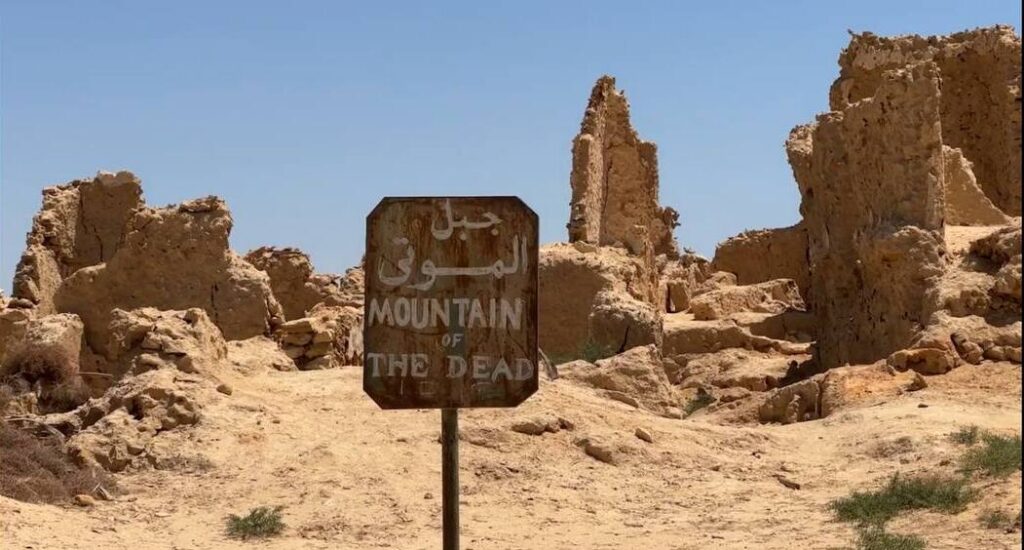
Shali Fortress sits at the very heart of Siwa, next to El Souq Square. This is quite understandable: built from kershef (a mixture of salt and clay), it used to be a home for Siwi locals since the medieval times (approx. 13th century).
However, in 1926, heavy rain flooded Siwa, eroding the structure and forcing the inhabitants to move out. So the village was built around it. Nowadays, the fortress hosts a mosque, a pottery school, and a labyrinth of alleyways.
Location Details
It is a relatively small hill honeycombed with hundreds of deep holes, presumably ancient Egyptian and Roman tombs. It supposedly dates back to the 26th Egyptian dynasty. Even though there are hundreds of hole-tombs, only 4 of them are marked:
- Tomb of Si-Amun is considered to be one of the finest; it’s named after its owner, who is claimed to be of Greek origin.
- Tomb of Mesu-Isis – presumably, Mesu-Isis was a woman; however, no more information about her was found until today.
- Tomb of Niperpathot – this tomb belonged to a priest or even a prophet of Osiris. As of 2024, his mummy is still in the tomb
- Tomb of the Crocodile – the actual owner of this tomb is unknown; it’s named after the portrait of the crocodile god Sobek preserved on one of the walls.
🛕Temple of Oracle

As legend has it, Alexander the Great came here to consult the oracle at the Temple of Jupiter-Amun. Afterward, he proclaimed himself as the son of Ammon-Amun. It sits on the ruins of an ancient village of Aghurmi. Apparently, back in ancient times, it was a sought-after spot, with some rulers willing to visit or destroy it. But today, it has not much to offer to its visitors except the history, some ruins, and a great view over date palms.
Salt pools
Siwa appeared on the tourist radar mainly due to the salt pools. Numerous videos showing people floating in the incredibly blue, salty waters flooded TikTok and Instagram recently. Even though these pools are mostly man-made as a result of operations of a salt mine owned by Siwa Salt Group, they are “uncivilized” from a tourist perspective.
There are no showers or changing rooms, no snacks or shops, or any other facilities on the site. On the bright side, there are no entrance fees. The salt pools are definitely a bucket list experience due to the extremely high salinity, 95%, compared to 45% of the Dead Sea.
Spring Bathing
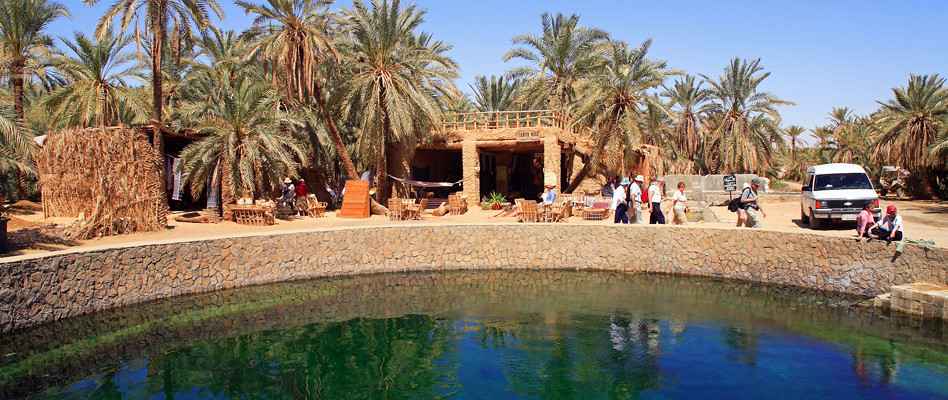
Siwa is home to numerous natural springs; the exact number is not certain, but it’s estimated to be 200+. The most notorious and the most controversial one is Cleopatra’s pool. It’s a cold spring in the center of Siwa town, with lots of tourists and locals attending it daily. That’s why many blogs advise against going there. However, several other springs are open to the public; sometimes there’s a camp or cafe by the spring, which would charge a small admission fee.
🌅 Fantasy sunset
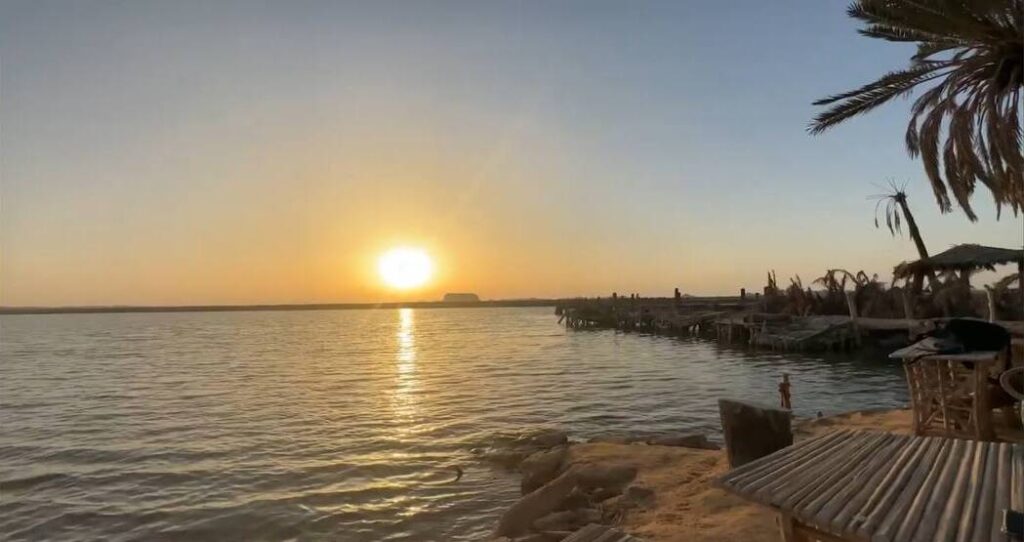
Fatnas Island, or “Fantasy Island”, as it’s often referred to, is a primary destination to watch the sunset in Siwa Oasis while having tea with dates and nuts. Located at Siwa Lake, about 6 km / 3.7 mi, Fatnas Island is technically a peninsula, connected to the mainland by a narrow road. So no need for a boat to get there; instead, it can make a good bicycle route.
6. Discovering the Fayoum Oasis
Location: Faiyum Governorate, about 100km / 62 mi from Cairo
Unlike the White Desert, Fayoum or Faiyum Oasis can still be considered a hidden gem as it’s less popular yet. And unlike Siwa, it’s way more conveniently located. Only 1 hour’s drive south of Cairo, it’s close enough to Hurghada and not too far from Alexandria. This is why it’s so easy to include in different Egypt itineraries.

The oasis is fed by the Bahr Yussef canal, which draws water from the Nile, making it a verdant retreat with numerous lakes, springs, and even waterfalls. Because of the numerous water sources, Fayoum is a lush and fertile area.
Not so much on the radar nowadays, Fayoum, apparently, was an important center of civilization in ancient times, as the oldest known paved road ran here. Historically, Fayoum was connected to the ancient city of Crocodilopolis, named for its worship of the crocodile god Sobek. Remember the tomb in Siwa?
🐳 Ancient whales
Traveling through Egypt, here and there, tourists are seeing the shells, corals, and other evidence of this territory being underwater some time ago. Fayoum hosts a much bigger testament – Wadi Al-Hitan, also known as the Valley of the Whales.
This UNESCO World Heritage site contains fossils of ancient whales, providing evidence of their evolution from land-dwelling creatures to ocean-dwellers. Discovered in the early 20th century, the site features well-preserved fossils that are approximately 37 million years old. Visitors can see these fossils displayed in situ, alongside a visitor center that offers detailed information about the site’s significance.
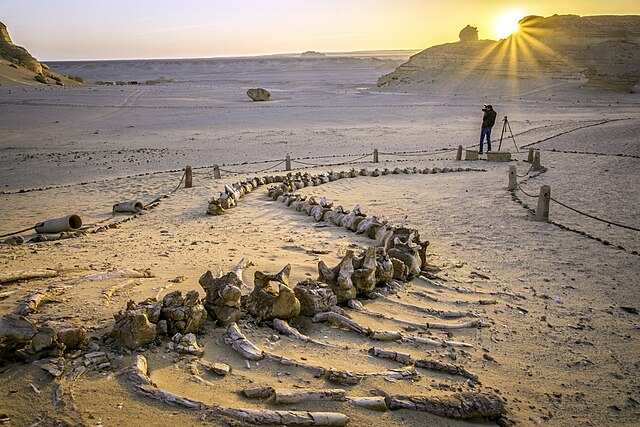
Location Details
Magic Lake
As we have seen before, every tourist attraction in Egypt must have something “magical”. Fayoum Oasis is no exception – it has a Magic Lake. Qarun Lake is known for its changing colors, which vary depending on the time of day and the season. It used to be a part of a much bigger prehistoric Lake Moeris. Due to high salinity, there are no Nilotic freshwater fish, but it serves as a wintering or nesting ground for dozens of species of water birds.
Waterfalls
Egypt is not the kind of country where one would go to see waterfalls. Yet, there’s such an option. Wadi El-Rayan, a national park, features two large lakes connected by Egypt’s only waterfalls. The area is also a habitat for various bird species, making it a great spot for birdwatching the similar to Qarun Lake.

▲ Pyramids
Giza, Dahshour, and Saqqara aren’t the only places to see pyramids in Egypt. Fayoum is home to several lesser-known pyramids, including the Pyramid of Hawara and the Pyramid of Meidum. The Pyramid of Hawara, built by Amenemhat III during the Middle Kingdom, is often referred to as the “Black Pyramid.” Its complex mortuary temple and labyrinth were intended to protect the king’s burial site. The Pyramid of Meidum, initially constructed as a step pyramid and later modified into a true pyramid, is one of the earliest examples of pyramid construction techniques that would later be perfected at Giza.
Luxor
Luxor is accessible by air or rail, as well as being the port of departure or destination for Nile cruises. It’s highly recommended to allow yourself an extra day or 2 in Luxor, as it has a lot to offer.
7. Diving deep into Egyptian history in the Valley of the Kings

Location Details
The Valley of the Kings is a royal burial ground for pharaohs and nobles of the New Kingdom. This archaeological site is home to more than 60 tombs, including the famous tomb of Tutankhamun.
The tombs are carved into the limestone hills and are renowned for their intricate wall paintings and hieroglyphs, which provide insights into ancient Egyptian beliefs about the afterlife. This is where the Great Pharaoh’s tombs were discovered in the 1920s.
Logistics
The Valley of the Kings is divided into two main areas: the East Valley, where most of the royal tombs are located, and the West Valley, which houses a few tombs, including that of Ay.
All tombs are labeled with the abbreviation “KV,” which stands for Kings Valley.
The general ticket allows visits to any 3 out of the 10 available tombs:
- KV1 – Ramesses VII
- KV2 – Ramesses IV
- KV6 – Ramesses IX
- KV8 – Merenptah
- KV11 – Ramesses III
- KV14 – Tausert – Setnakht
- KV15 – Sety II
- KV16 – Ramesses The First
- KV43 – Thutmose IV
- KV47 – Siptah
3 more open tombs come at an extra price as of 2024:
KV9 – Ramesses V & VI 180 EGP($4 / €3 / £2.5)
KV17 – Seti I 1,800 EGP($37 / €34 / £29)
KV62 – Tutankhamun 500 EGP ($10.5 / €10 / £8)

Hidden Chambers and Secrets
One of the largest and most complex tombs in the Valley is KV5, built for the sons of Ramesses II. This massive tomb contains over 120 chambers and corridors, many still being excavated and studied. The Tomb of Thutmose III, located high on the cliffs, features a unique layout with numerous chambers and frescoes. The steep stairway leading to the tomb offers spectacular views of the surrounding valley.
8. Getting iconic Instagram shots at the Temples of Karnak

Location Details
The Temples of Karnak are located on the East Bank of the Nile River. It is one of the largest and most impressive temple complexes in Egypt. It spans over 200 acres. Dedicated to the Theban triad of Amun, Mut, and Khonsu, Karnak features towering columns, massive statues, and impressive obelisks. Temples of Karnak date from around 2055 BC to around 100 AD. Walking through the Great Hypostyle Hall, with its forest of giant columns, is a highlight for any visitor.
Enormous Columns
The Grand Hypostyle Hall is one of the most well-known and photogenic areas of Karnak. This massive hall features 134 towering columns arranged in 16 rows. The columns don’t have the same height, and different sources give different numbers.
Apparently, the tallest ones reach 24 meters (79 feet) in height. But all of them are intricately carved with hieroglyphs and reliefs. The play of light and shadow through the columns creates an interesting effect, making it one of the top Instagram locations. Early morning or late afternoon visits offer the best lighting conditions.

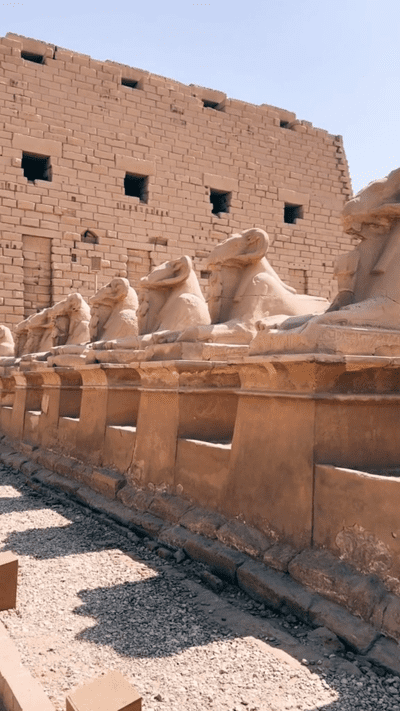
Cat-guarded avenue
The Avenue of Sphinxes, spanning approximately 2.7 kilometers, historically connected Karnak Temple to Luxor Temple. This ancient pathway is lined with over 1,350 sphinx statues, each featuring a lion’s body and a ram’s head. Walking along the avenue, you can see how the statues lead up to the temple entrance, with large pylons marking the way. The avenue was used for religious processions, particularly during the annual Opet Festival, which celebrated the renewal of the king’s power.
More to see
Karnak is home to several impressive obelisks and colossal statues. The Obelisk of Hatshepsut, originally one of a pair, stands at 29m / 95ft and weighs approximately 320 tons. It is inscribed with hieroglyphs that detail Hatshepsut’s divine birth and her dedication to the god Amun. Nearby, the broken remains of Thutmose III’s obelisk, which originally stood at 35m/115ft, can also be seen. Karnak’s colossal statues include the 10m / 32ft-tall statue of Ramses II, which originally stood in the First Court of the temple.
9. Taking a Hot Air Balloon Ride Over Luxor

Pricing: Prices start at approximately $80 / €73 / £62 per person.
There are many-many salesy texts on the web, advocating for this activity. Most of them describe the views as breathtaking and the whole experience as bucket-listable. That’s why getting a well-grounded opinion is hard until you try. Here are a few facts to know:
| Pickup time | is never certain, as it depends on the wind |
| Duration | ≈ 45 min |
| Take off location | on the West Bank |
| Accessibility | you can’t sit during the flight |
| Landing location | is never certain as it depends on the wind |
| People per basket | 30 |
Safety concerns
Hundreds of people are riding the hot air balloons over Luxor daily. Even though there is a history of incidents, one could say the same about cars and planes. The main reason for incidents is the weather. If there’s a sandstorm and your company doesn’t cancel, you would rather cancel it yourself. The safety briefing is very important, as the passengers give their weight.
What people say
“Whilst staying in Luxor I had to give this a try and I was so glad that I did. I was made to feel safe and secure with a great crew putting safety first and then we took to the skies. The surrounding nature views were great but personally I loved just seeing the vast array of balloons in the sky together. It was incredibly peaceful and beautiful to see.”
Skeete
“The hot air balloon experience was nothing short of spectacular. The view from the balloon was absolutely breathtaking—you could see the entire Valley of the Kings on one side and the majestic Nile on the other. It was a sight to behold!”
Laura D
10. Wandering around the Luxor Temple

The Luxor Temple is a complex dedicated to the Theban Triad of Amun, Mut, and Khonsu. It was built around 1400 BCE. Built primarily during the reign of Amenhotep III and expanded by subsequent pharaohs, this temple is dedicated to the rejuvenation of kingship. Highlights of the temple include the imposing First Pylon, the courtyard of Ramses II, and the Sun Court of Amenhotep III.
Location Details
Open in the air
Luxor is a collection of open-air pillars sitting right near the Nile. The site can become quite crowded, especially during peak tourist season. To avoid the crowds, you can just walk around the complex and have a very similar experience to going inside.
Religious Mix
Luxor Temple has traces of various religions. Over the centuries, it has been used for different religious practices. Within the temple grounds, you can find remnants of a Christian basilica built by the Romans, including frescoes depicting saints. Additionally, the Abu Haggag Mosque is still in use today. It was constructed over part of the temple ruins in the 13th century.
Evening Illumination
If you have no specific plans for an evening in Luxor, you can simply walk by the Luxor Temple. The pillars are beautifully lit up. The lighting isn’t good enough to see all the details. But the atmosphere it creates provides an immersive experience of the old times when Luxor Temple was a hub for religious activities and festivals.
As you might remember, the Avenue of Sphinxes connects Luxor and Karnak temples. You can easily combine them on the same day.
Aswan and Abu Simbel
11. Visiting Abu Simbel Temples

Abu Simbel is 2 temples allegedly completed in 1244 BC by Pharaoh Ramses II. The complex includes two temples, the Great Temple and the Small Temple. The Great Temple is dedicated to Ramses II himself and the gods. The Small Temple is dedicated to Ramses’ chief wife, Queen Nefertari, and the goddess Hathor.
Location Details
Logistics
The Abu Simbel Temples are located around 20km / ~13 mi from the Sudanese border on the western bank of Lake Nasser. It is about ~300km / 190 mi south of Aswan, which is a 4.5-hour drive. However, unlike Siwa, it does have an airport. It also has several hotels to spend a night in. You can just fly there from Cairo or Aswan.
Game of light
Twice a year, a solar phenomenon occurs at the Great Temple. On February 22 and October 22, sunlight illuminates the sanctuary. This sanctuary is located at the back of the temple. It contains 4 statues. Three of them belong to the gods Ra-Horakhty, Amun, and Ptah, and the fourth statue is Ramses II himself. This event is believed to celebrate the king’s birthday and his coronation day and is known as the Sun Festival. This fact proves the great knowledge of astronomy possessed by ancient Egyptians.
12. Touring the Temple of Philae

The Temple of Philae is located on Agilkia Island near Aswan. Just like Abu Simbel, it was affected by the construction of the Aswan High Dam and the creation of Lake Nasser. The temple is dedicated to the goddess Isis. The walls of the hypostyle hall are covered with reliefs showing scenes from the myths of Isis and Osiris, including the resurrection of Osiris and the birth of Horus. One of the significant monuments within the temple complex is the Kiosk of Trajan, also known as Pharaoh’s Bed. This small, open-sided structure has 14 columns with floral capitals and is believed to have been used for religious rituals.
Location Details
Boat Ride
The only way to access the Temple of Philae is by boat. The ride is short, about 10 minutes. It offers nice views of the temple and the Nile.
Last pagan stronghold
The Philae Temple is one of the youngest, completed during the Ptolemaic period (332 to 30 BC). It’s known for being the last place where hieroglyphs were written, and the last place where the Ancient Egyptian religion was practiced. Christians also used the Philae Temple as a church, and you can see carvings of Coptic Crosses inside the temple.
13. Having High Tea at the Old Cataract Hotel

The Old Cataract Hotel in Aswan, constructed by Thomas Cook & Son, opened its doors in 1899. The hotel building itself is an example of late 19th-century colonial architecture. It features a mix of Moorish, Persian, and Victorian elements, reflecting the eclectic style popular among European colonial buildings of the era.
Location Details
Abtal El Tahrir Street, Sheyakhah Oula, Aswan 1, Aswan Governorate 81511
The hotel’s name is derived from its location near the First Cataract of the Nile, a series of rocky rapids that historically marked the southern boundary of ancient Egypt. In 2008, the Old Cataract Hotel underwent a major renovation, managed by the Accor Group, which owns the Sofitel brand. The hotel was reopened as the Sofitel Legend Old Cataract Aswan, emphasizing its historical significance and luxury status.
Agatha Christie
Agatha Christie wrote “Death on the Nile” while sitting and having tea on the patio. She decamped here for a year back in 1937. Her desk is still in the foyer, and the hotel has a suite named after her. Both movie adaptations of 1978 and the one of 2017 were filmed right here in the hotel.

🚬 Winston Churchill
Another distinguished guest was Winston Churchill, who stayed at the Old Cataract Hotel in 1921. Churchill, the future Prime Minister of the United Kingdom, visited Aswan during his extensive travels across the British Empire. His stay at the hotel is well-documented, including his enjoyment of the panoramic views of the Nile and his strategic discussions with British officials stationed in Egypt. Today, the most expensive suite of the hotel is the one named after Winston Churchill.
The Tea
You’ll get all the usual components of an English high tea (cakes, scones, and sandwiches), though the views of felucca sailing boats slowly drifting down the Nile are entirely Egyptian. It’s a good idea to dress smartly, as the venue maintains a certain level of formality.
Understandably, a stay in the hotel can be quite pricey; that’s why coming just for tea or dinner is more affordable. However, there are mixed experiences around the web; some people were admitted, while others were rejected. It might help to reach out beforehand and adjust the plans.
14. Cruising the Nile River
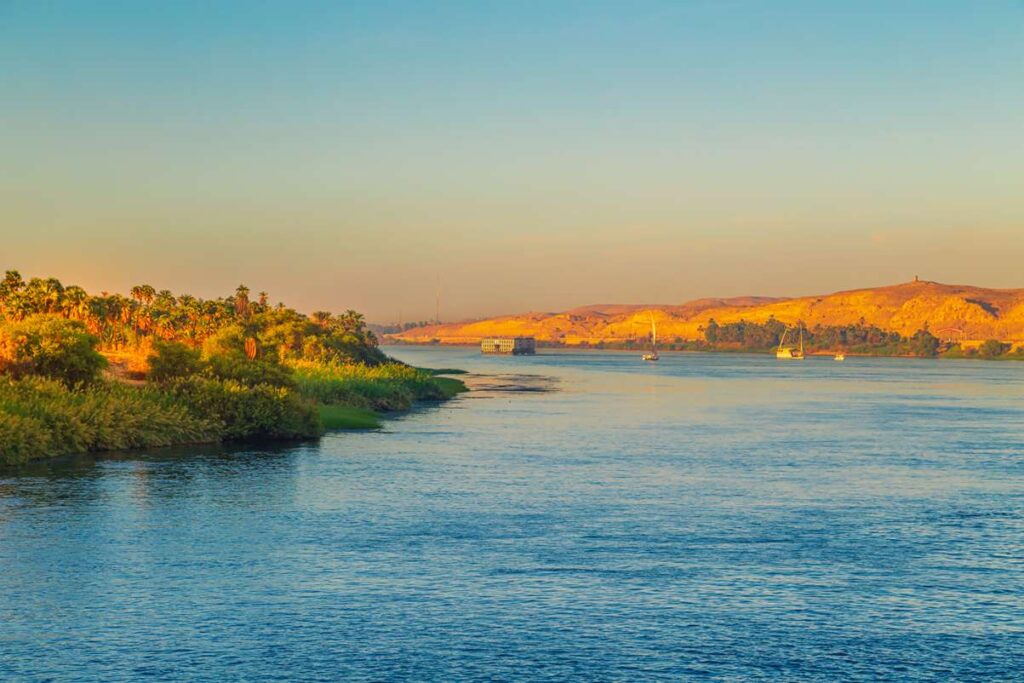
Location: From Luxor to Aswan and vice versa
Best time to go: October to April
Pricing: Prices vary depending on the duration and luxury level, starting around $100 per day
The Nile River cruise is an extremely popular activity. That means hundreds of ships circling in between Luxor and Aswan. Moreover, the itinerary will be similar, meaning you will be visiting all the historical sites together with thousands of people.
If you travel by land, you can flex your schedule and come at the earliest possible time or during lunchtime to avoid the crowds. On a cruise, you will not have such an opportunity. On top of that, you won’t have much time on the site; it will only allow 1-2 hours to explore and take photos.
Background
Historically, these cruises have played a role in Egyptology. In the early 20th century, prominent Egyptologists such as Howard Carter and Lord Carnarvon, who discovered the tomb of Tutankhamun in 1922, utilized the Nile for transportation and research.
The discovery of Tutankhamun’s tomb near Luxor brought global attention to the area, boosting the tourism industry. Companies like Mövenpick and Oberoi offer high-end options, featuring amenities such as swimming pools, gourmet dining, and spacious cabins.

Seeking alternatives
As stated before, taking the Nile River cruise for sightseeing isn’t the best choice. As for the views, the reviews differ. Some call them scenic, others find them boring. But if you really want to get the gist of it, you can take a sunset boat ride in Aswan. It’s short, affordable, and offers the best views of the Nile.
Death on the Nile
Even though there are premium cruises available, taking a Nile River cruise just for amenities doesn’t make sense. However, if you are looking for a one-of-a-kind historical experience, you should board the Steam Ship Sudan. This steamer was put afloat by Thomas Cook back in 1885, the same one who later built the Old Cataract Hotel. It served as the inspiration for “Karnak” in Agatha Christie’s novel and a filming location for a 2004 movie adaptation. However, this experience is quite expensive, starting at $4,3k / €4k / £3,4k
15. Experiencing a Nubian Village

Location: Along the Nile River near Aswan, Egypt
There are several Nubian villages around Aswan, but those vibrant, motley Instagram shots were taken in just one – Gharb Seheil. That is another location that can be accessed only by boat. A visit to a Nubian village provides an opportunity to observe and participate in traditional daily activities. This might include bread-making, pottery, or henna painting. The area is tourist-oriented – shops, restaurants, and guest houses are available.
Nubians
Aswan is actually located in Nubia. The Nubians are an ethnic group indigenous to the Nile region, specifically southern Egypt and northern Sudan. They have a rich history that dates back thousands of years, with their own distinct language, culture, and traditions. The Nubian Kingdoms, such as the Kingdom of Kush, were powerful and influential in ancient times, often interacting with and sometimes ruling over Egypt.
Vibrant Photos
The Nubian village is one of the top photo locations. It’s widely popular because of the brightly painted houses and artistic decorations. The architecture and decoration reflect Nubian cultural heritage, incorporating symbols and patterns passed down through generations. These houses are typically built from mud bricks, a practice dating back centuries.
Crocodiles
The ancient Nubian people used to worship crocodiles, as the pharaohs used to worship them as evil, envy, and war. That’s why you’ll find numerous mummified crocodiles in the village. However, today, poor animals are used for tourist entertainment, and their living conditions are not good.
Alexandria
16. Discovering the Catacombs of Kom El Shoqafa
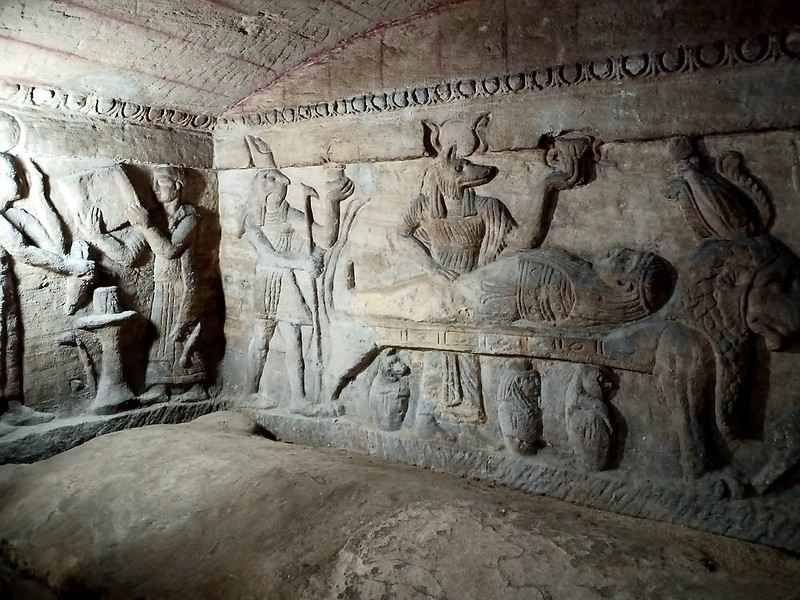
Paris? Rome? Palermo? The Czech Republic? Which location comes to mind when you hear “catacombs”? But not Egypt for sure. Yet catacombs are another unexpected bucket list experience that Egypt has to offer.
Location Details
Accidental re-discovery
The Catacombs of Kom El Shoqafa, like many other historical sites above, blends ancient Egyptian, Greek, and Roman cultures. These catacombs were used as a burial site from the 2nd to the 4th centuries AD. The catacombs were initially built for one family and were forgotten for centuries. Until they were accidentally discovered in 1900 when a donkey fell through a hole, revealing the underground chambers.
Unexpected encounters
Descending a spiral staircase, visitors enter a labyrinth of chambers, tunnels, and burial niches. The catacombs consist of three levels of tombs and chambers cut into the bedrock, extending to a depth of about 35 m/ 115 ft. The main chamber, known as the Rotunda, features a circular hall with a large column in the center, surrounded by burial niches.
This room leads to the Hall of Caracalla, named after the Roman Emperor Caracalla, where the remains of both humans and animals were found. One of the most striking features is the depiction of Anubis dressed as a Roman legionary, symbolizing the fusion of Egyptian and Roman cultures.
17. Researching the Alexandria Library
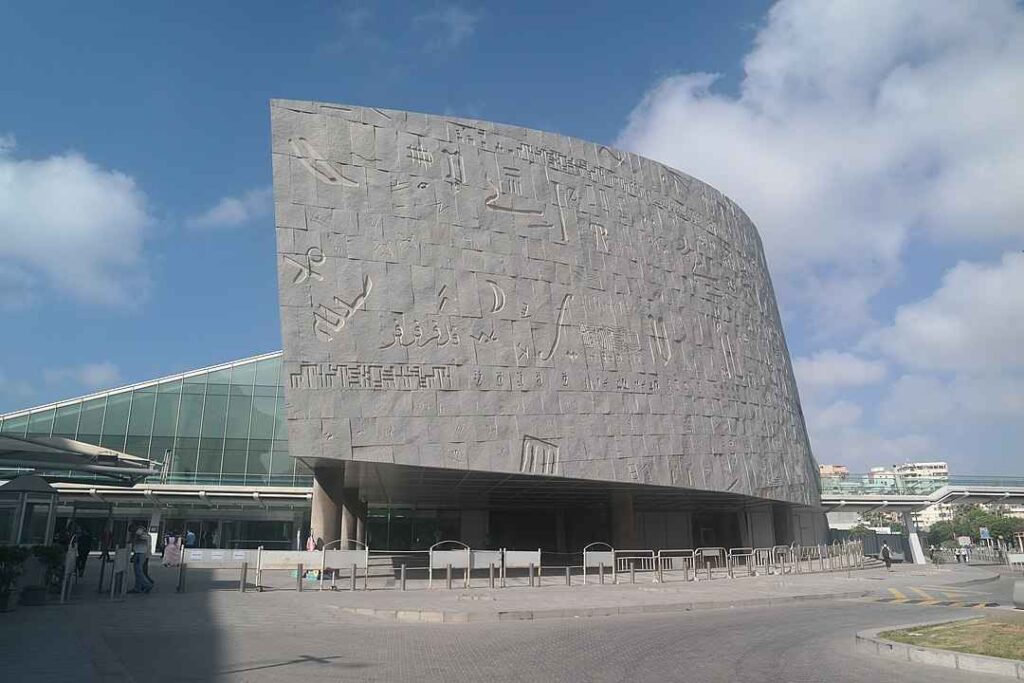
The Bibliotheca Alexandrina, or the Alexandria Library, is a modern reimagining of the ancient Library of Alexandria, one of the most significant libraries of the ancient world. Opened in 2002, the library is a cultural complex that includes a planetarium, museums, art galleries, and research centers.
Location Details
The Inspiration
The ancient Library of Alexandria was one of the most significant libraries of the ancient world. Established in the 3rd century BCE during the reign of Ptolemy II Philadelphus, it was part of the larger research institution known as the Mouseion, which means the “Institution of the Muses” in Greek.
This institution was dedicated to the nine Muses, the goddesses of the arts, and functioned as a center for scholarly and scientific research. The library’s collection is estimated to have contained between 40,000 to 400,000 papyrus scrolls, which would be equivalent to tens of thousands of modern books.

Modern days
Designed by the Norwegian architectural firm Snøhetta, the building features a striking circular design meant to symbolize a rising sun. The main reading room, which spans 11 floors and is bathed in natural light from the glass panel roof.
The exterior walls are carved with letters from scripts around the world. The library houses 8 million books in multiple languages — it’s Waterstones, WHSmith, Blackwell’s, and Barnes & Noble on steroids. It’s more than a library, of course: consider museums, art galleries with rotating exhibitions, a planetarium, and a culture complex.
18. Walking around the Citadel of Qaitbay
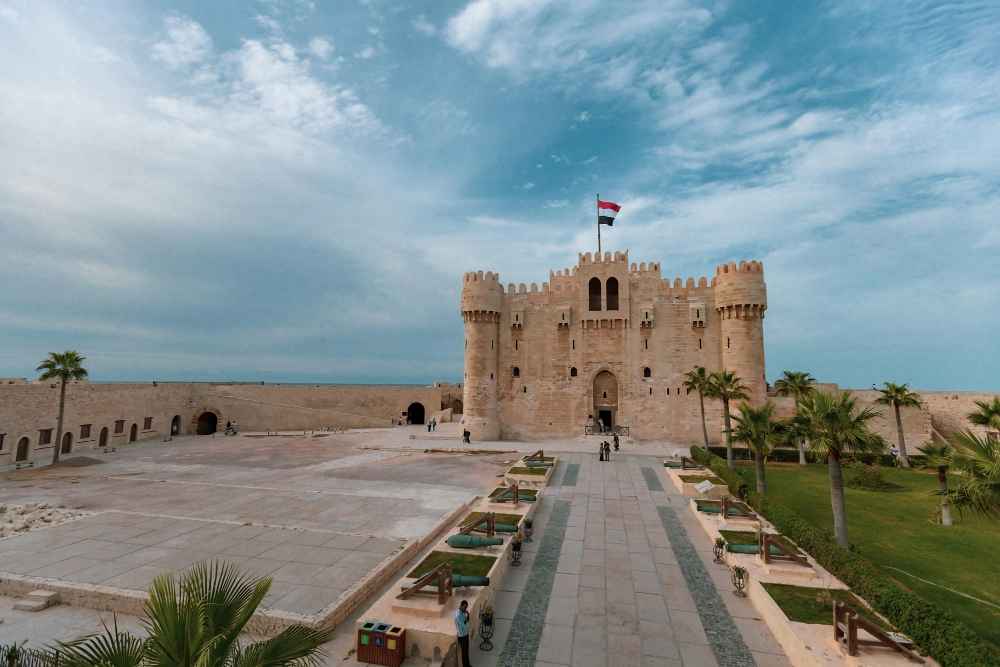
The Citadel of Qaitbay is a 15th-century fortress built by Sultan Al-Ashraf Sayf al-Din Qa’it Bay. The citadel stands on the site of the ancient Lighthouse of Alexandria, one of the Seven Wonders of the Ancient World, which was destroyed by earthquakes. The fortification was designed to defend against naval attacks and is a prime example of medieval military architecture. Visitors can explore the well-preserved walls, towers, and barracks, and enjoy panoramic views of the Mediterranean Sea.
Location Details
The Last Frontier
The Citadel of Qaitbay was built in the 15th Century. It was used to protect the Mediterranean Sea from intruders. It was very instrumental in wars and was severely damaged multiple times. Today, the Citadel of Qaitbay is open as a museum. The citadel has three main floors. The ground floor houses a mosque, storerooms for weapons and ammunition, and living quarters for soldiers. The mosque, centrally located on this floor, features a single dome supported by four pillars. The second floor includes barracks, halls, and additional storerooms, as well as a large open courtyard. The third floor contains the sultan’s quarters and observation posts, with walls featuring numerous arrow slits and small openings for cannons.
Sinai Peninsula
19. Uncovering the Mysteries of the Blue Hole in Dahab
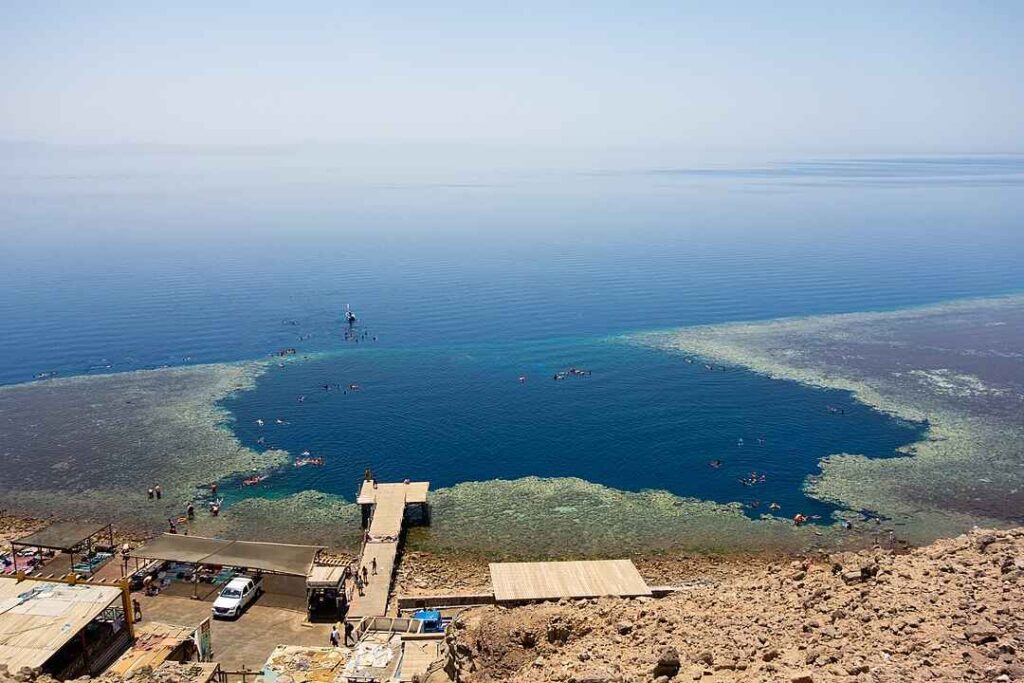
Dahab is a popular tourist destination on the southeast coast of the Sinai Peninsula. Unlike more popular Hurghada and Sharm-el-Sheikh, which have all-inclusive resort experiences, Dahab is more laid-back and is often chosen for longer stays. It doesn’t have any luxury accommodations. It’s attractive for wind and kite-surfing and, of course, diving.
The abyss and the arch
The Blue Hole in Dahab is one of the world’s most famous dive sites. This natural underwater sinkhole plunges to depths of approximately 132m/433ft. The site is famous for the “Arch,” a submerged tunnel that leads to the open sea. The arch is in the middle, at 62m / 200ft depths.
The Blue Hole is home to various marine life, including vibrant coral formations, tropical fish, and occasional sightings of turtles and dolphins. But it’s not the stunning marine life that makes Blue Hole so attractive for divers, but the challenge it presents.
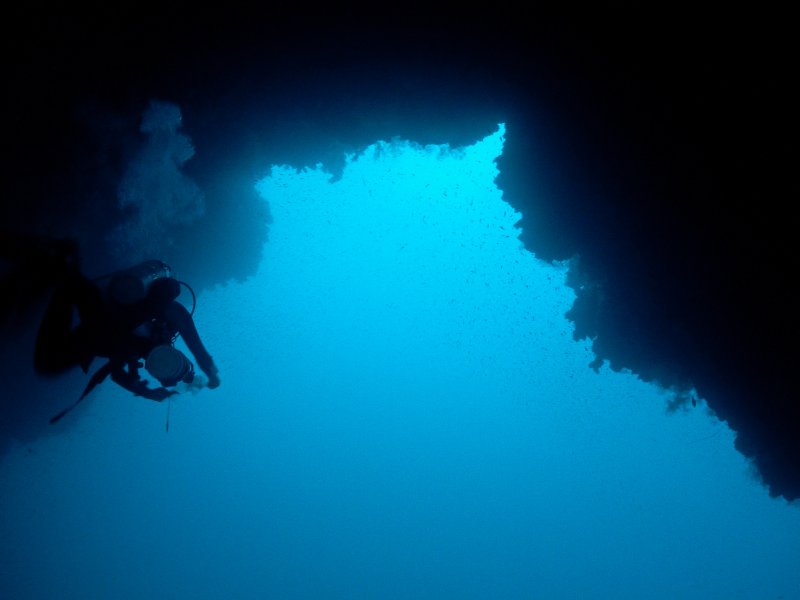
The Diver’s Cemetery
The Blue Hole earned the somber nickname “Diver’s Cemetery” due to the number of divers who have perished attempting to navigate to the very bottom. Memorial plaques at the site serve as a sad reminder of the importance of diving within one’s limits and adhering to safety protocols. If you are wondering why so many deaths.
The answer is simple – “deep air”. Under the protocol, air can only be used at a depth of 66m/216ft maximum, which should be enough to go through the Arch, but nowhere close to the bottom of Blue Hole. But the breathing mixes for diving can be quite expensive. So, hundreds of divers come to try their luck each year, and some of them remain there forever.
20. Diving or Snorkeling in Ras Mohammed National Park

Ras Mohamed National Park is located at the southern tip of the Sinai Peninsula in Egypt, approximately 20 km/ 12.5 mi southwest of Sharm El Sheikh. Established in 1983, it covers an area of 480 km2/185 mi2, including 135 km2/ 52 mi2 of land and 345 km2 / 133 mi2 of water. That means if you plan to explore it fully, you must take 2 separate trips — 1 by water and another 1 by bus. The park is bordered by the Gulf of Suez to the west and the Gulf of Aqaba to the east, making it a meeting point of two major bodies of water.
21. Watching the Sunrise at the Summit of Mount Sinai
Location: near the city of Saint Catherine, South Sinai, Egypt
Best time to go: Spring or Fall
Pricing: Entrance fee is around 300 EGP /$7/€6/£5
Mount Sinai, also known as Jabal Musa in Arabic and Mount Moses, got its name due to the belief that Moses received the Ten Commandments. Hiking to the summit of Mount Sinai is a popular pilgrimage for many travelers. The trek, typically done at night to catch the sunrise, offers stunning views and a spiritual experience. The hike starts at Saint Catherine’s Monastery. Built around AD 330, it is one of the oldest Christian monasteries in the world and also a UNESCO World Heritage Site.

🥾 The Trek
The entire trek is 10.9 km / 7 mi out and back, and it takes an average of 4 h 35 min to complete. Mount Sinai is considered a challenging route because of the last 750 steps, which are quite steep. There are two paths to the summit, the easier and wider Camel Path (Siket Sayidna Musa) and the shorter, more challenging Steps of Penitence (Siket Sayidna Musa). Most hikers usually stay in either Dahab or Sharm el-Sheikh.
🏔️ The 3 Peaks
Mount Sinai has an elevation of 2285 m / 7,497 ft. The nearby Mount Catherine has a height of 2,637m / 8652 ft and is the highest mountain in Egypt. These 2 mountains, along with Mount Abbas (2,346 m / 7697 ft) present a 3-peak challenge for those on an adventure.
22. Sampling Local Cuisine

Egyptian cuisine is generally rich and hearty. Egypt is a Muslim country, so you’ll encounter mostly Halal dishes. Egyptian cuisine is rooted in the use of staple ingredients such as fava beans, lentils, rice, and bread, particularly aish baladi, a type of flatbread. Meat, primarily lamb and chicken, is often grilled or stewed. The cuisine is influenced by Egypt’s history, incorporating elements from Middle Eastern, Mediterranean, and African culinary traditions. Spices like cumin, coriander, and garlic are commonly used to flavor the food.
🍲 Traditional Egyptian Dishes
- Koshari: A popular street food, koshari is a filling mix of rice, lentils, chickpeas, and macaroni, topped with tomato sauce and crispy fried onions.
- Ful Medames: Often eaten for breakfast, ful medames is a dish of stewed fava beans seasoned with garlic, lemon, and olive oil.
- Molokhia: A green soup made from the leaves of the jute plant, flavored with garlic and coriander, and often served with chicken or rabbit.
- Mahshi: Vegetables such as zucchini, bell peppers, and vine leaves stuffed with a mixture of rice, herbs, and sometimes meat.

🥖 Street Food
- Ta’ameya: Egyptian falafel, made from ground fava beans and deep-fried, served inside a pita bread with tahini and fresh vegetables.
- Shawarma: Marinated meat, usually chicken or beef, cooked on a vertical rotisserie and served in a wrap with garlic sauce and pickles.
- Feteer Meshaltet: A flaky, layered pastry that can contain sweet or savory fillings.

🧉 Beverages
- Hibiscus Tea (Karkade): A tart and refreshing drink made from dried hibiscus flowers, served hot or cold.
- Sugarcane Juice (Asab): Freshly squeezed sugarcane juice
- Sahlab: A warm, creamy drink made from milk and flavored with orchid root powder, topped with nuts and cinnamon
- Sahara tea: a black tea with cane sugar and fresh mint leaves

23. Going for a camel ride
Those who base themselves in one of the all-inclusive Red Sea resorts are offered a variety of excursions by their tour operator. They usually include boat rides to Ras Mohamed in Sharm el Sheikh or Giftun Island in Hurghada, as well as variations of desert safaris.
24. Hiking the Colored Canyon

Visiting Colored Canyon is one of the top activities outside of Sharm el-Sheikh or Dahab. It’s often packed with visiting the Blue Hole, Jeep safari, Abu Galum, etc. However, there’s a lot of confusion related to Colored Canyon.
🧶 Figuring out
The Sinai Peninsula is home to a number of canyons, some sources say 13, others say 11, but only a few of them are open for visiting. Colored, White, Al-Ard, sometimes referred to as Arada, Salama, Abu Hamada, and maybe a few more, but seeing them can be quite challenging.
There are a few points of confusion. The first one is that sales leaflets show a breathtaking canyon, but it’s actually not Egypt; it can be Antelope Canyon in the United States. The second confusion is the length of the canyon and the hike duration. Some sources say it’s only 800m (half a mile), and others quote 2.8 km / 1.7 mi, which is the correct geographic length of Colored Canyon. Why such a difference? Very simple – the ones who recounted the shorter hike were taken to a shorter Salama Canyon.
🥾 The hike
Colored Canyon is a circuit, featuring vibrant rock formations up to 40 m / 131 ft high. The hike should be easy for the most part, though certain sections require scrambling over rocks and squeezing through narrow gaps. The total time is typically around two to three hours, depending on the pace and route taken.
25. Swim with dolphins, turtles, or dugongs in Hurghada
Locations: Marsa Alam, islands, Abu Dabbab
Swimming with dolphins is one of the top activities offered to those stationed in Hurghada. Some tourists don’t even know that spotting turtles or dugongs could be an option. Nevertheless, all 3 species can be spotted in the waters around Hurghada, so with a little preparation, anyone can spot these creatures in their natural habitat.
🐬 Dolphin Encounters
Dolphin House, also known as Sha’ab Samadai, is one of the most famous spots near Hurghada for encountering dolphins. Located about 20 kilometers southeast of Marsa Alam, it is a large reef shaped like a horseshoe, providing a natural habitat for spinner dolphins. The area is protected, and visits are regulated to minimize impact on the dolphins. Visitors can observe dolphins in their natural habitat, either by snorkeling or diving. The site includes a designated swimming area where human-dolphin interactions are monitored to ensure the safety and well-being of the animals.

🐢 Swimming with Turtles
Abu Dabbab Bay, situated about 30 kilometers north of Marsa Alam and accessible from Hurghada, is a prime location for observing sea turtles. The bay is known for its seagrass beds, which attract green sea turtles and hawksbill turtles. The best times to see these turtles are during their feeding times, typically early in the morning or late in the afternoon. Snorkelers and divers can watch the turtles graze on the seagrass, and it’s essential to maintain a respectful distance to avoid disturbing them.
🦭 Spotting Dugongs

Dugongs, also known as sea cows, are rare marine mammals that can occasionally be spotted in the waters near Hurghada. Abu Dabbab Bay is one of the few places where visitors have a chance to see these elusive creatures. Dugongs feed on seagrass, and their sightings are less frequent than those of dolphins and turtles. To increase the chances of encountering a dugong, visitors should join early morning snorkeling or diving trips, as this is when dugongs are most likely to be feeding.





Comments